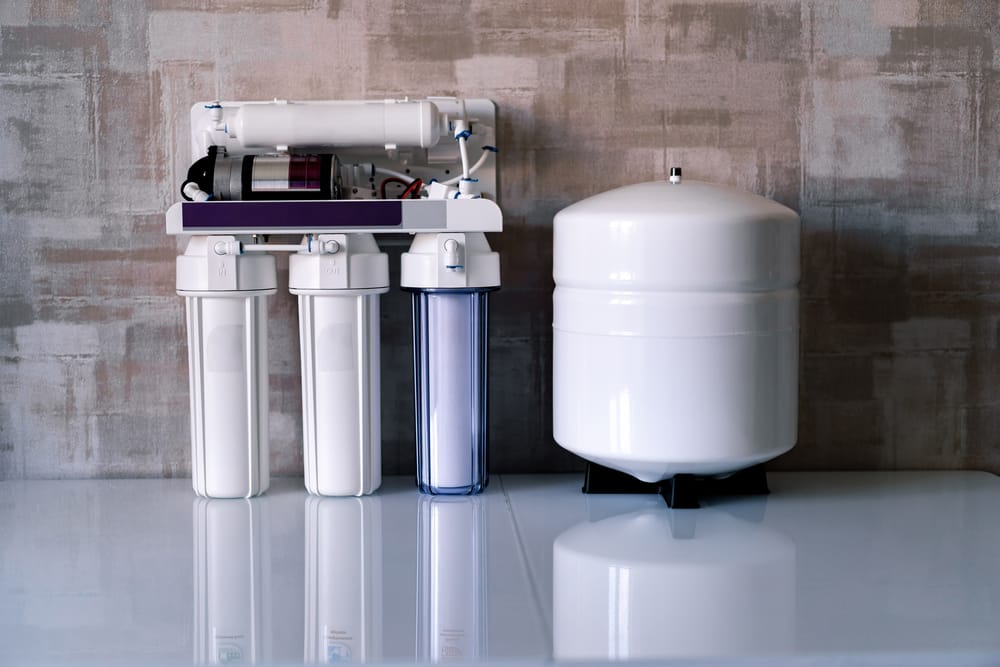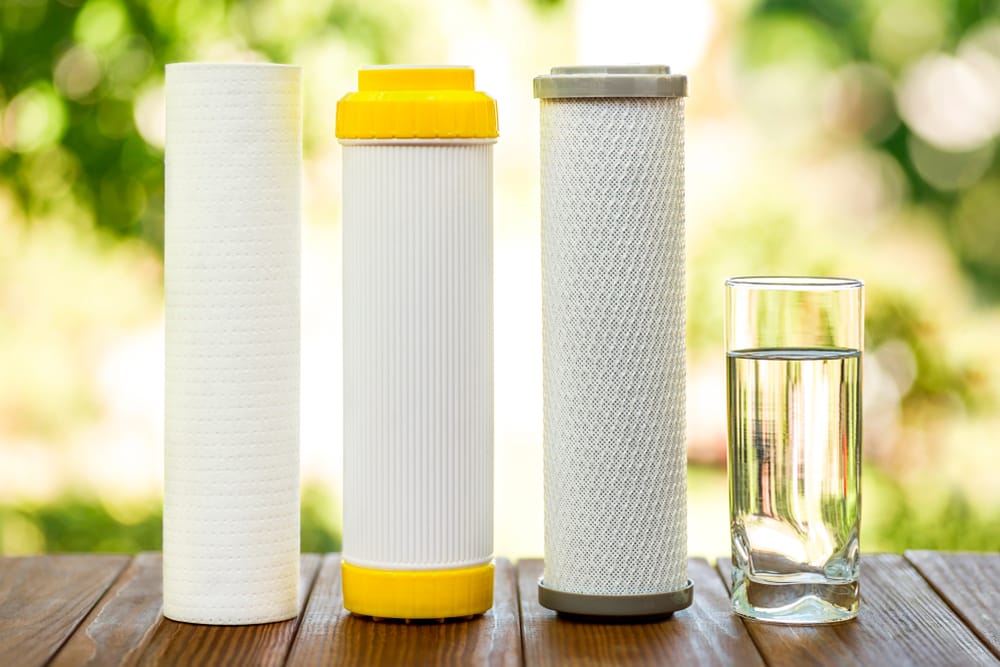3 Types of Water Filtration Systems and their Benefits

Clean, pure water is not a luxury—it’s a fundamental need for every individual. It plays a pivotal role in our overall health, forming the basis of our bodily functions, from digestion to absorption and temperature regulation. Beyond health, the quality of water directly impacts the taste of our foods and beverages. Imagine cooking pasta in contaminated water or making your morning coffee with water that has impurities—neither is appetizing. But with the escalating levels of contaminants in our water sources, stemming from industrial waste, agricultural runoff, and outdated infrastructure, the pressing question arises: How can we ensure the water we consume is of the best quality?
The most effective answer to this concern is water filtration systems. At “Fix It People,” our commitment extends beyond fixing homes—we aim to enhance healthier living. And the first step to achieving this is by ensuring you’re well-informed about your water quality options. Throughout this post, we delve deeper into the realm of water filtration, exploring various systems available and highlighting the unique benefits each offers to households.
Reverse Osmosis Filters

Reverse osmosis (RO) systems stand out as one of the most effective solutions. Reverse osmosis is a water purification process that uses a partially permeable membrane to remove ions, molecules, and larger particles from drinking water. In simpler terms, RO is like a very fine sieve that catches contaminants but lets water molecules pass through.
How Does It Work?
- Pre-filtration: Before water enters the RO membrane, it passes through a pre-filter. This stage captures larger contaminants like silt, sediment, and chlorine that can clog the RO membrane.
- RO Membrane: At this core stage, water is pushed through the semi-permeable membrane. The membrane captures and filters out contaminants like lead, fluoride, pesticides, and nitrates. Only purified water passes through.
- Post-filtration: The purified water then goes through a post-filter or carbon filter. This stage gives the water a final polish, ensuring any remaining taste or odor contaminants are removed.
- Storage: The RO system typically has a storage tank where purified water is stored, ensuring you always have clean water on demand.
Benefits of an RO System
- Superior Filtration: RO can remove up to 99% of dissolved salts (ions), particles, colloids, organics, bacteria, and pyrogens from water.
- Improved Taste: By removing impurities and contaminants, RO improves the taste, odor, and appearance of water.
- Low Maintenance: Though the filters and membrane need periodic replacement, RO systems generally require minimal maintenance.
- Saves Money in the Long Run: With an RO system, there’s no need to buy bottled water, reducing long-term costs and environmental impact.
Considerations Before Installing
While RO systems are highly beneficial, there are a few things to consider:
- Wastewater: For every gallon of purified water produced, an RO system can waste 2-3 gallons. However, modern systems are becoming increasingly efficient.
- Pressure Dependency: RO systems work best with strong water pressure. In areas with low pressure, a booster pump might be required.
- Filter Replacement: To ensure the system functions efficiently, filters and membranes need to be replaced periodically.
Mechanical Water Filters

Among the various filtration methods, mechanical water filters serve as a frontline defense against particulate matter. Mechanical water filters are devices that use a physical barrier, usually in the form of a mesh or membrane, to separate particles from water. They function much like a sieve, capturing unwanted debris and allowing only clean water to pass through.
Types of Mechanical Filters
- Screen Filters: These are perhaps the simplest form of mechanical filters, using a mesh screen to capture particles. The mesh size determines which particles are filtered out.
- Cartridge Filters: These cylindrical filters use various media like polyester, ceramic, or pleated fabric. Water flows through the cartridge, and particles get trapped within the filter material.
- Disk Filters: Consisting of multiple discs stacked together, these filters have grooves and bumps which capture particles when water is passed through them.
Benefits of Mechanical Water Filters
- Efficient Particle Removal: They are excellent at removing sediment, silt, sand, and other physical particles which can cause cloudiness or turbidity in water.
- Protection for Other Filtration Systems: By capturing larger particles, mechanical filters often act as a preliminary defense, ensuring that more intricate filtration systems (like reverse osmosis) aren’t clogged by larger debris.
- Low Maintenance: These filters are often easy to clean or replace and don’t require complex upkeep.
- Affordability: Mechanical filters tend to be more affordable than more advanced filtration systems and can be a cost-effective solution for improving water clarity.
Considerations Before Using
- Not Comprehensive: Mechanical filters primarily remove particles. They do not effectively remove dissolved contaminants, bacteria, or chemicals. Thus, they’re often used in conjunction with other filtration methods.
- Regular Cleaning or Replacement: To ensure efficient water flow and filtration, these filters must be cleaned or replaced regularly.
- Choosing the Right Size: The size of the filter pore or mesh determines what particles will be filtered out. It’s essential to select a filter that suits your specific water needs.
Absorption Water Filters

Absorption water filters, while perhaps lesser-known than their mechanical or reverse osmosis counterparts, play a pivotal role in ensuring the purity of our water. Absorption filters, as the name suggests, use a material (usually activated carbon) to absorb unwanted contaminants from water. Rather than merely blocking or sieving out particles, these filters actively capture and hold contaminants within their structure.
Benefits of Absorption Water Filters
- Chemical Removal: Activated carbon is adept at removing organic compounds and chlorine, which can adversely affect the taste, color, and odor of water.
- VOC Reduction: Many volatile organic compounds (VOCs), which can be harmful when ingested, are effectively reduced by absorption filters.
- Improvement in Taste and Odor: By removing chlorine and other contaminants, absorption filters often make water taste and smell better.
- Affordability: Many absorption filters, especially those in pitcher or faucet-mounted configurations, are relatively affordable.
Considerations Before Using
- Not a Complete Solution: While excellent for removing specific contaminants, absorption filters don’t remove all types of impurities. They may not effectively eliminate microbes, heavy metals, or minerals.
- Saturation Point: Over time, the activated carbon becomes “full” and can’t absorb any more contaminants. Regular replacement or regeneration is essential to maintain effectiveness.
- Flow Rate: Water needs sufficient contact time with the activated carbon to be effectively cleaned. Higher flow rates can reduce the filter’s efficiency.
Each filtration method offers its unique strengths, addressing specific contaminants and challenges. But one thing remains consistent: their collective importance in ensuring the safety and quality of the water we consume. By investing in and maintaining proper water filtration, we not only protect ourselves but also enhance our quality of life. Cleaner water means better health, tastier food, and beverages, and a reduced environmental footprint, especially when we decrease our reliance on bottled water.
Implementing and maintaining these systems requires expertise and precision. This is where “Fix It People” comes into the picture. With our dedication to promoting healthier living spaces and our team of skilled professionals, we stand ready to assist homeowners in selecting, installing, and maintaining the ideal water filtration system tailored to their unique needs. Our commitment goes beyond mere installation; we ensure that every system we put in place functions optimally, providing clean, safe water for years to come.




